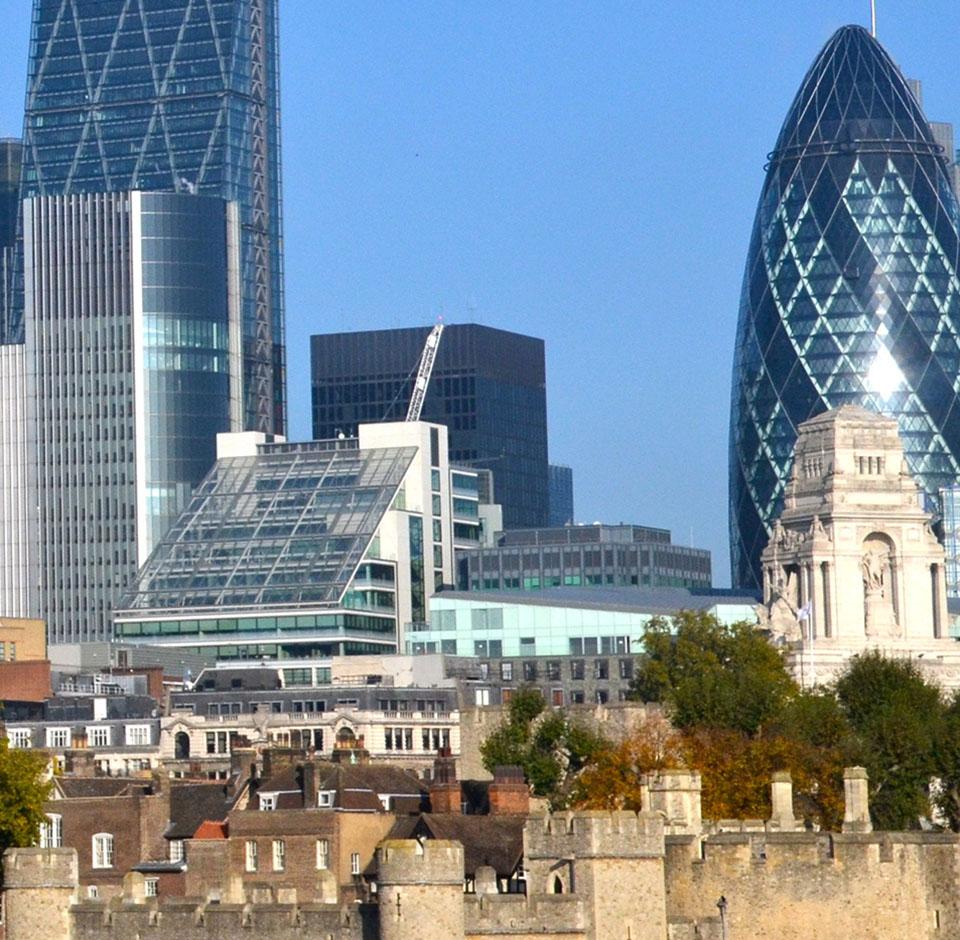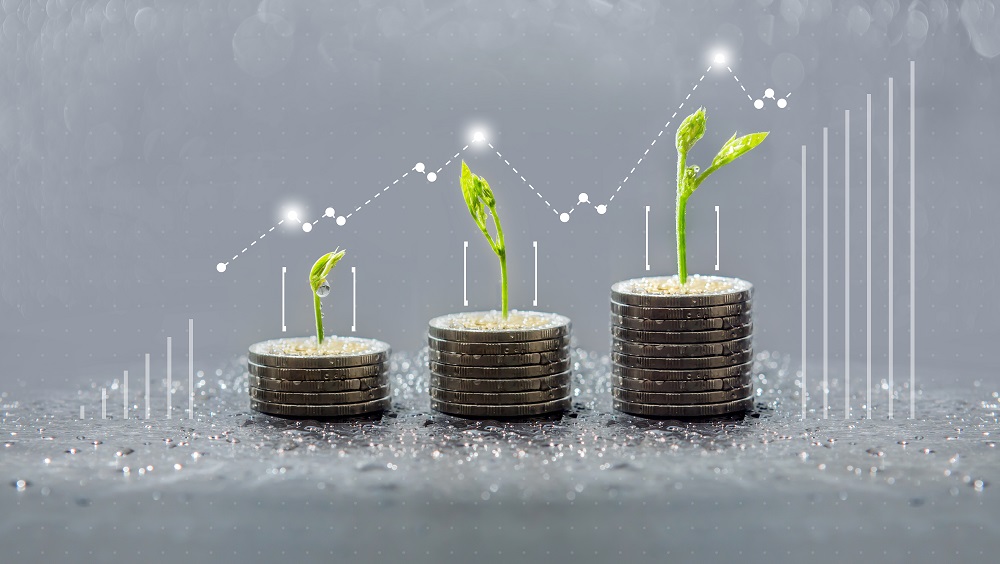IPCC alarm bells signal a bold vision for business
If there was any doubt that climate change is very bad for business, the recent and growing incidence of devastating wildfires, floods, water shortages and drought are a stark reminder.
Against this hellish backdrop, the high-profile climate report from the Intergovernmental Panel on Climate Change (IPCC) just published is terrifyingly detailed. Climate Change 2021: The Physical Science Basis, warns of generalised and catastrophic weather changes.
Notwithstanding the appalling consequences for millions of people across the world, the global costs of adapting to climate impacts are forecast to be around $140-300 billion a year by 2030 and $280-500 billion per annum by 2050, according to UN Environment Programme research. And a WWF analysis suggests that the global economy could lose $8 trillion a year through environmental-related effects by 2050.
Businesses of all sizes are taking action or at least waking up to the idea that their futures are threatened. The scope of changes needed are very challenging and numerous, but relatively easier for large corporations to embrace than SMEs, which are an essential part of the climate-change solution.
Business transformation
How the transformation of business can be achieved is mind-bogglingly complex and full of competing tensions, but it is necessary for survival, both economic and physical, as the IPCC report illuminates.
Thousands of scientists have contributed data to the Sixth Assessment Report, produced by 234 authors from 66 countries and 517 contributing authors. The Working Group I report is the first instalment of the IPCC’s Sixth Assessment Report (AR6), which will be completed in 2022.
The scientific evidence is compelling. Scientists are observing changes in the Earth’s climate in every region and across the whole climate system. Many of the changes “are unprecedented in thousands, if not hundreds of thousands of years, and some of the changes already set in motion—such as continued sea level rise—are irreversible over hundreds to thousands of years,” the report’s authors state. “This report is a reality check.”
Temperatures have already risen by around 1.1 degrees C over the last century or so. Global temperature increase from pre-industrial times is likely to breach 1.5 degrees C (the Paris Agreement’s most ambitious pathway) by 2040.

Immediate emissions reduction
The report provides new insights into the chances of breaching the global warming level of 1.5 degrees C in the next decades, and finds that unless there are immediate, rapid and large-scale reductions in greenhouse gas emissions, limiting warming to close to 1.5 degrees C or even 2 degrees C will be beyond reach.
The scientists advise that global temperature increase is likely to exceed 3 degrees C this century without “deep” cuts to emissions, taking place “immediately”, amplifying the recent emissions gap study from the UN.
The UN scientists emphasise that net-zero carbon emissions by 2050 should be the minimum goal for limiting global temperature rise to 1.5 degrees C and underlines forcefully that emissions should be halved by the end of this decade. What’s more, the report says that governments must also ensure that other greenhouse gases such as methane are measured and drastically reduced.
On a positive note, strong and sustained reductions in emissions of carbon dioxide and other greenhouse gases will limit climate change, leading initially to better air quality, with global temperatures stabilised in 20 to 30 years.
Panmao Zhai, IPCC Working Group I Co-Chair, said: “Stabilising the climate will require strong, rapid, and sustained reductions in greenhouse gas emissions, and reaching net zero CO2 emissions. Limiting other greenhouse gases and air pollutants, especially methane, could have benefits both for health and the climate.”
Better data, more knowledge
The report shows that emissions of greenhouse gases from human activities are responsible for approximately 1.1 degrees C of warming since 1850-1900 and finds that, averaged over the next 20 years, global temperature is expected to reach or exceed 1.5 degrees C of warming. This is based on improved observational datasets to assess historical warming, along with progress in scientific understanding of the response of the climate system to human-generated greenhouse gas emissions.
According to the scientific projections, climate changes will increase in all regions and for 1.5 degrees C of global warming, there will be rising incidences of heatwaves, longer warm seasons and shorter cold seasons. At 2 degrees C of global warming, heat extremes will reach critical tolerance thresholds for agriculture and health more often.
Current disruptive and multiple climate events across the world will all increase with further warming, including changes to wetness and dryness, to winds, snow and ice, coastal areas and oceans.
Without urgent action there will be more heavy precipitation, droughts, and loss of Arctic Sea ice, snow cover and permafrost, while carbon sinks will become less effective at slowing the growth of carbon dioxide in the atmosphere.
So how can business respond immediately to ensure “strong, rapid and sustained reductions” in greenhouse gases? Some larger corporations are already taking steps, while others are making the right signals. For SMEs, it’s more problematic, and surveys indicate that they have neither the financial resources nor the skills needed to respond effectively.
It’s also clear that the UK business community is waiting for clear, comprehensive guidelines from the government, backed by cash.

Energy efficiencies
However, what is also very obvious is that one of the easiest, quickest and more sustainable routes for any company seeking to reduce carbon footprint is the adoption of full-scale energy efficiency strategies. And from our experience at SaveMoneyCutCarbon, there are thousands of businesses of every shape and size that have yet to make this move.
Using less energy, more efficiently, should be central to decarbonisation policy and business strategy. We simply do not have the resources to keep consuming at current levels – the renewable energy sector cannot not supply enough. There will not be a simple-swap solution from fossil fuels.
Energy efficiencies can ensure more than 40% of the reduction in greenhouse gas emissions to meet climate goals up to 2040, according to the International Energy Agency (IEA) but we’ve seen progress on energy efficiency grinding slower this year, with the economic impact of Covid-19.
It is up to government to create the best environment with good incentives, advice and support, to ensure that over the next year, the transformation takes shape.
It’s also true that companies will need to focus on nature-based solutions if the net zero target is to be achieved. Earlier studies by the IPCC have concluded that large-scale carbon-capture technologies simply cannot achieve the scale required in the timescales being set. To be effective they would have to match the carbon sequestration being achieved by natural systems.
Nature-based solutions
This means that companies have to work with nature, restoring environments and creating woodlands, forests, wetlands and peatlands to optimise carbon capture. However, the IPCC now warns that ecosystems are more sensitive to smaller changes in emissions than previously thought, with this issue compounded by nature loss.
Without urgent action, the capacity of the world’s natural systems to sequester carbon could be smaller by 2050 than now. Hopefully, there will be extensive guidance from the 15th Biodiversity COP in Kunming, China in October. The final text will be negotiated by world leaders at that convention but here’s the UN’s draft plan.
While climate change intensifies nature loss, which in turn fuels further change, nature-based solutions will play a big part in ensuring climate adaptation and mitigation. Already, many governments and large businesses are adopting this approach, and corporations can use nature projects in accounting against their own climate goals.
As the IPCC report says, even if global net-negative CO2 emissions were to be achieved, “global CO2-induced surface temperature increase would be gradually reversed but other climate changes would continue in their current direction for decades to millennia”.

COP26 – adaptation and resilience
The COP26 climate summit in November has adaptation and resiliency as key themes, so it’s strongly hoped that businesses will watch carefully and respond effectively with climate-change strategies that embrace and support nature.
There are already encouraging signs, with the creation of a new network of companies with combined revenues of more than $3 trillion that is helping the private sector work with cities and governments to build climate resilience.
The network, convened by the Resilience Shift think tank and Resilience First business network, boasts big names like Tesco, Starbucks, Intel, HSBC, NBC Universal, BP, EY, WSP and Deloitte among the 600 businesses that have signed up.
Alongside that, businesses can work with the scenario analysis provided by the Task Force on Climate-Related Financial Disclosures framework to map corporate performance and resiliency against a range of physical and financial climate-based pathways.
Now is also the time for bold and long-term vision from business, looking beyond the achievement of net zero. For example, one of the Principal Partners for COP26 – Microsoft – has set a target to become “carbon-negative” by 2030, which includes plans to remove more carbon than it emits annually and level off its previous emissions.
And Viridor, the waste management firm aims to be a net-zero emissions business by 2040 and to reach net-negative emissions five years later by investing in carbon removal technologies.

Short-term decarbonisation plans
These initiatives are excellent and help to light the commercial pathways but at the same time, businesses cannot lean back on longer-term net zero targets. All will need to create short-term decarbonisation plans, informed by scientific advice and warnings offered in the IPCC report.
Further guidance is available through the Science Based Targets initiative (SBT)i, which is updating its strategic approach to increase the minimum ambition for corporate climate action from well below 2C to 1.5C. The SBTi has also published guidance on the development of a new global standard to ensure that corporate net-zero carbon targets are aligned with climate science.
More than 600 companies representing $13 trillion in market capitalisation have committed to 1.5 degrees C targets through the SBTi’s Business Ambition for 1.5 degrees C since its launch in 2019.
But it’s also worth bearing in mind that Oxfam has warned that governments and businesses are hiding behind a “net-zero smokescreen”, relying too much on unproven and unrealistic carbon removal and offsetting schemes rather than real efforts to decarbonise. The IPCC report reinforces this, highlighting that real action is needed.
Companies will also need to step up pressure on government, which has a habit of often appearing to dither and delay, particularly over the detail of climate policy, with words only having the energy efficiency of hot air.
The IPCC report starkly reminds us in the business community that there is very little time. The transformation needed is in our grasp. We have the technical and physical solutions, and the ability to finance the green revolution. It really is a question of whether we have the will to change.
Find out how we can help your business.
0333 123 5464